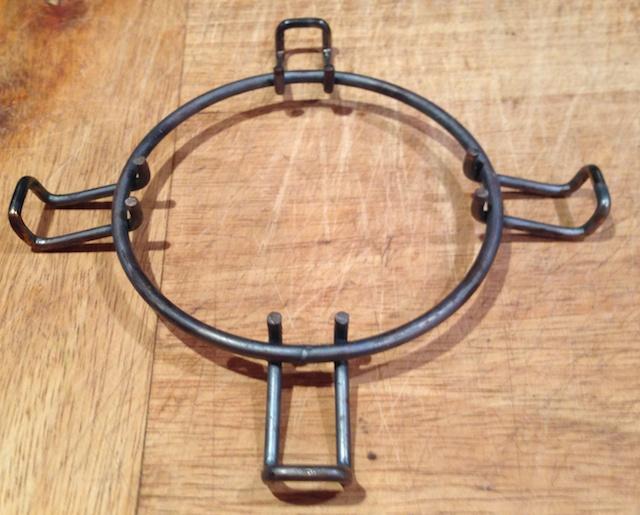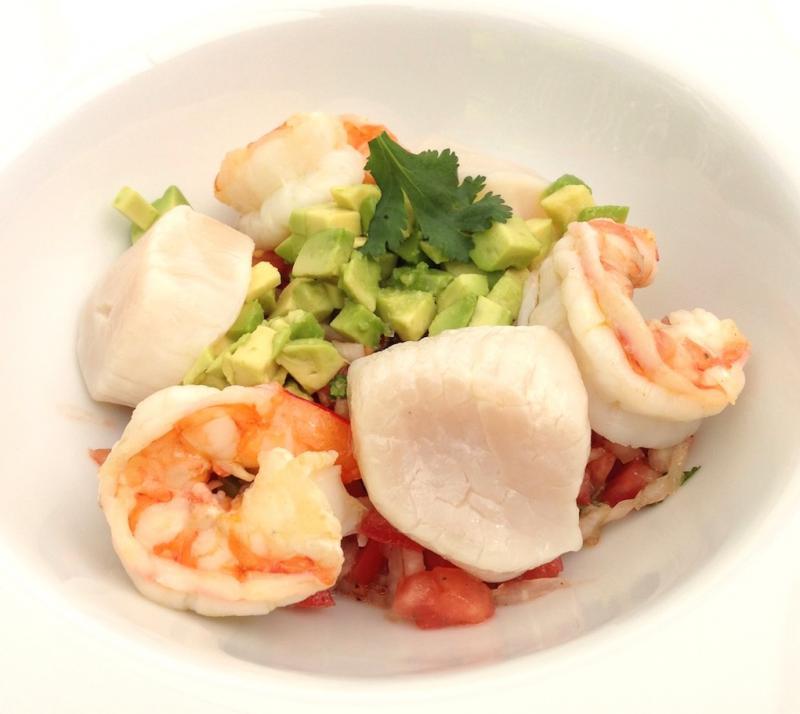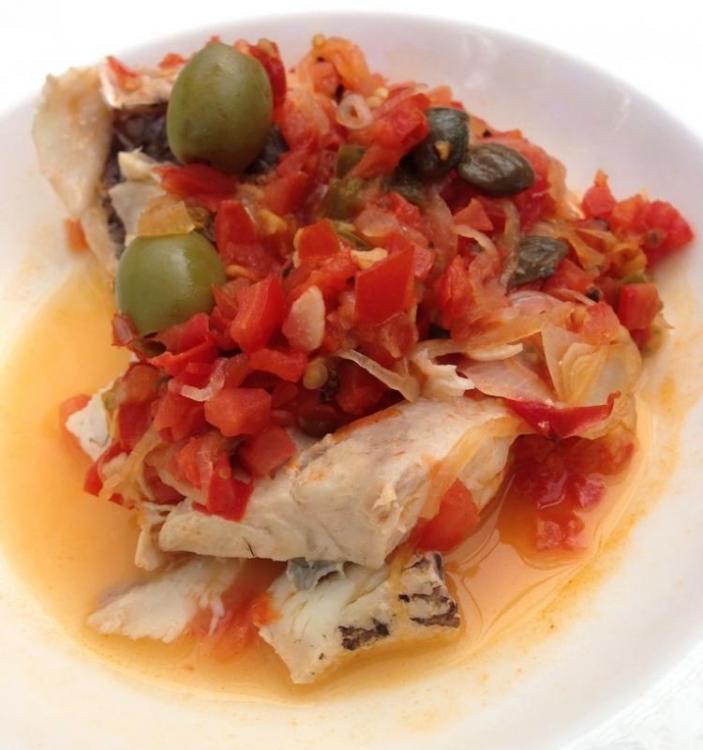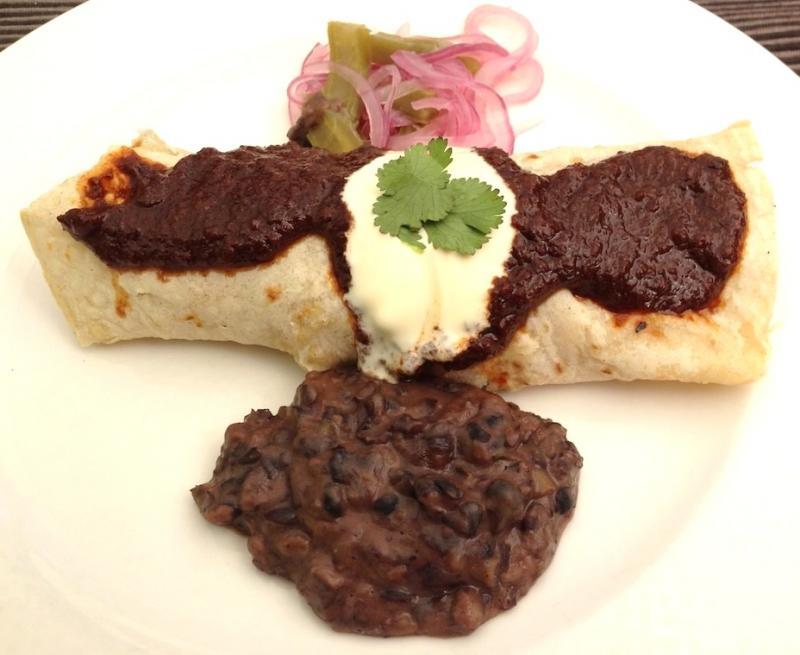-
Posts
2,606 -
Joined
-
Last visited
Content Type
Profiles
Forums
Store
Help Articles
Everything posted by nickrey
-
The issue of pasteurisation is an interesting one. Using sous vide long and slow pasteurisation is likely to give a different outcome to the high temperature, short time pasteurisation that is typically used.
-
Fuzzy iPhone picture but you get the idea. Bought some camargue red rice and found a salad recipe from Yotam Ottolenghi. Rice, quinoa, dried apricots, spring onion, normal onion, fried rocket, pistachios, zest and juice of orange, bit of lemon juice, and garlic. An explosion of colour, texture, and taste.
-
If you look at Heston Blumenthal's chicken stock recipe, he does the conventional stock making first step of bringing the elements to the boil and skimming off impurities before pressure cooking the stock for maximum extraction. This is going to result in a more clear product. With the level of flavour extraction done by the pressure cooker, I cut the carrot content way back to avoid both the muddy taste referred to above as well as an orange tint to the stock. If you are going to use the stock for sauces and to add to other dishes for flavour, why work towards a clearer stock anyway? You could always use an egg white raft to clarify it if you want to use it in a consommé.
-
I don't know if it is the case in the US but home gas ranges here in Australia almost inevitably come with a metal device for the wok burner that holds a round bottomed wok perfectly. It looks like this:
-
This comment raises the elephant in the room. If the sous vide confit uses similar salting, encases the product in fat, and is well past the temperature and time for pasteurisation why can't it be kept for similar times to conventional confit?
-
See this post above. It has recommendations relating to this issue. The quoted article has a lot of complex statistics which may put people off reading it but scroll down to appendix A on the article and it gives a classification of whiskies based on taste, style, location, etc. It also gives a best in class which would be the best bet for you to purchase and start your comparative journey into the world of Scotch whiskies.
-
Who said 4 hours? I wouldn't go over one hour.
-
I'd cook it sous vide, then roll it in a pan over high heat to brown and then dredge through a glaze made of the cocoa, hazelnut (probably oil) and some veal demi-glace. Slice and then serve it on your plated sauce. Daniel Humm does something similar with his venison in the Eleven Madison Park cookbook. It works well. You could also use the components in a salt and sprinkle a bit over the top for serving. If it's a loin, which I'd recommend, I'd cook the venison at 52C. The Pumpkin sauce will be sweet so it's a good call to add acidity. Have you considered using something like a stone fruit or berry instead? If you used peach or pear it would go well with both the venison and the fish; pumpkin with fish, perhaps less so. The fish can also be cooked sous vide at 52C so it is simply a matter of sauce, open bag, place protein on plate, and garnish.
-

The state of the market for consumer sous vide equipment
nickrey replied to a topic in Kitchen Consumer
Breville in Australia (it is an Australian-owned company) has simply rebadged the Sous Vide Supreme for sale. We always pay way more for electrical kitchen equipment that people in the US so price is not really as much of a psychological inhibitor here. What we are seeing is a variant on the technology adoption lifecycle. Those people who set up the sous vide forum and started off using this procedure for home use were innovators. Think Nathan Mhyrvold and the evolution of his exploration into sous vide into his tome Modernist Cuisine. This is typically the first 5% who adopt a new technology. Next come the early adopters, which comprises the next 15% of the population. My suspicion is that we are moving through the latter part of this stage at the moment; indicative of this is the technology being picked up by major producers here in Australia such as Breville and Sunbeam (I still remember friends from America commenting on the number of mobile phones used here in the 90s; we tend to be early adopters). After this comes the early majority, which is where the technology is accepted and used widely. My suspicion is that we're not quite there yet but all indications are that it will happen in the next few years. This is where the manufacturers start making serious money from the technology. The technology is penetrating into the market. Think home electric coffee machines and the range from professional espresso through to Nespresso type machines and you have a similar product line. The sealing issue is made easier by people buying FoodSaver type products to enhance freezer storage life. Like anything, the more exposed people are to something, the more they will want to explore it. I'm seeing it in my various food groups as more and more are ordering sous vide variants. The clip on the side of the pot circulators seem most popular with these groups. -
The same principle is used to dry-cure meat (add salt cure, vacuum, leave in refrigerator). If you don't oversalt it shouldn't be an issue.
-

eG Foodblog: Dave Hatfield - a food adventure!
nickrey replied to a topic in Food Traditions & Culture
Thanks Dave, your blog was very interesting and informative. As for the cheese close-up, I'm sure we could take it. What I miss most is unpasteurized soft cheese. It's banned here in Australia. Possibly the easiest place to get it close to here is Hong Kong, which makes it an expensive item when you include travel. -

eG Foodblogs: Coming Attractions 2012 & 2013
nickrey replied to a topic in Food Traditions & Culture
Really looking forward to it Dave. Will there be lots of cheese (crosses fingers)? -
Mexican today. After guacamole served in stone mortar (no picture), moved to seafood cocktail. Prawns cooked, scallops prepared with lime juice. Next up enchiladas with Rick Bayless quick mole, homemade frijoles, homemade creme fraiche, and cactus/red onion pickle. Finished with fish (snapper) Veracruz.
-
I suspect it's more poetic than practical however to my taste if I get the salt levels right I am happy eating the pasta by itself. It really become the hero of the dish rather than the sauce, which then takes the role of being a condiment. With the amounts of sauce a lot of people tend to put on pasta it's probably best to cut down on the salt in the water.Like all cooking it's all a matter of balance and traditional Italian approaches always seem to get it right. Of course, if you grew up with excessive saucing, you are likely to have a different view. For cooking water, I always use larger amounts as it makes the cooking easier and is less likely to need stirring that could break the pasta.
-
The traditional recipe used a lot of salt, which is going to inhibit bacterial growth significantly.
-

WSJ Articles on Food, Drink, Cooking, and Culinary Culture
nickrey replied to a topic in Food Traditions & Culture
So now that it's arrived were the theories that it had an external controller true, or is it simply a power supply as the makers said? -
My favourites were Ragu alla Bolognese (with milk, white wine and nutmeg); Insalata di tonno e fagioli (tuna bean salad). I also taught myself how to make home made pasta and risotto out of the Classical Italian Cookbook. That's over thirty years ago now.
-

WSJ Articles on Food, Drink, Cooking, and Culinary Culture
nickrey replied to a topic in Food Traditions & Culture
Because the heaters in sous vide machines are designed primarily to maintain rather than reach temperature I always find it better to use pre-heated water. -
Keith, see this food safety document from New South Wales Health. They got the bulk of their information direct from Douglas Baldwin. Table 4 shows the cooling times for meat of varying thickness and shape in an ice slurry. Given the length of time it takes to cool in an ice slurry, I'd be using this rather than conventional fridge temperatures.
-
Hm, I am not particularly convinced by either argument. The latter argument (re: fridge temperatures) has been debunked. As for rapid chilling for food safety, I think you will find that the risk is minimal if almost nonexistent if you chill in an ice bath as opposed to simply moving the bags from the SV machine directly into the fridge. Hm, I am not particularly convinced by either argument. The latter argument (re: fridge temperatures) has been debunked. As for rapid chilling for food safety, I think you will find that the risk is minimal if almost nonexistent if you chill in an ice bath as opposed to simply moving the bags from the SV machine directly into the fridge.I'm always persuaded by data. Where was the former debunked? and what is your evidence for the latter? I recall looking at the thermal cooling model put together by either Douglas or Nathanm and they came down firmly on the side of using an ice bath rather than just throwing it in the fridge.
-
Why do you need to rapid chill it in an ice bath?It is pasteurized, not sterilized so rapid chilling keeps it out of the danger zone when cooling. Besides it allows me to throw it in the fridge without affecting other foods by raising the temperature by putting hot food in there.
-
This post may be of interest to you. You only need about 1 tbsp of duck fat as the fat in the leg will render out in the cooking process leaving the leg in the bag totally immersed in fat as a cooking medium. Rinse the cured legs well and dry off before putting in the bag. Cook at 82C (180F) for 8 hours. Rapid chill in an ice bath. You can keep the resultant product for a while in the fridge before cooking as it is salted, pasteurised, stored in fat, and vacuum sealed. The Polyscience site says up to 45 days if your refrigerator is 5C (41F) or colder.
-
She had an impact far beyond America. I bought a copy of the metricated version of "The Classic Italian Cookbook" in 1980. This was the first of many Italian cookbooks that I bought but unlike many of my earlier cookbooks is one that I still use today.Rest in Peace Marcella, you had a significant global impact bringing authentic Italian cooking to those of us outside Italy and will be missed. Rereading this thread - I'd like to get a copy of that book with metric weights - very cool. It was the Macmillan (Papermac) edition that was adapted by Anna Del Conte.
-
How sharp was your knife? If it's blunt you need to use more force to cut and that is when the accidents tend to happen.
-
She had an impact far beyond America. I bought a copy of the metricated version of "The Classic Italian Cookbook" in 1980. This was the first of many Italian cookbooks that I bought but unlike many of my earlier cookbooks is one that I still use today.Rest in Peace Marcella, you had a significant global impact bringing authentic Italian cooking to those of us outside Italy and will be missed.







